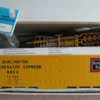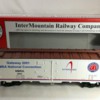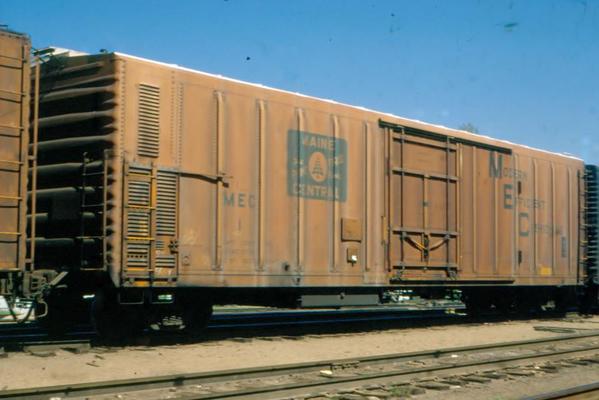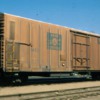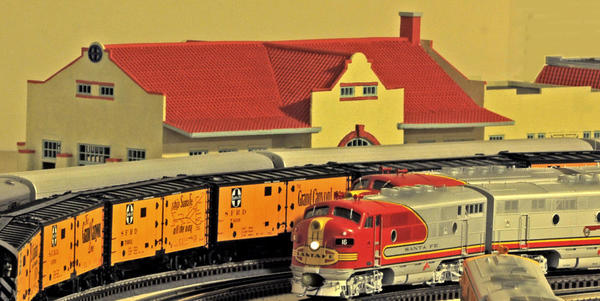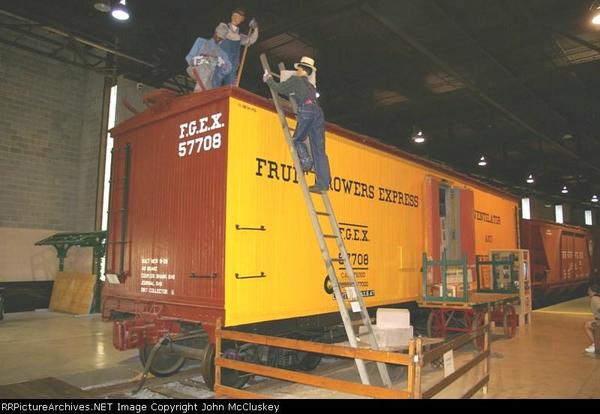Early refrigerator cars were built making extensive use of wood. The natural insulating properties of wood made it an excellent material for refrigerator car construction. However, wood or wood sided cars required higher maintenance than all steel cars. As better insulating materials became available in the 1930s car builders began to construct refrigerator cars with all steel exteriors. At first steel construction was used to produce otherwise conventional ice bunker refrigerator cars. As technology advanced in the 1940s, 50s and 60s the evolution of the refrigerator car continued to incorporate new types of doors, even better insulation that made ice unnecessary for many shipments and mechanical refrigeration for more constant temperatures and transportation of newly popular frozen foods.
40 foot steel sided Ice Bunker Refrigerator Cars.
We have several models available that depict 40 foot steel sided ice bunker refrigerator cars. One of the first O scale plastic models on the market was a kit offered Intermountain. The Intermountain tooling has been used to offer ready to run cars by several manufacturers including Red Caboose and K-Line.
Atlas acquired the Intermountain tooling and released their first steel side reefers in 2003. Like all cars from this tooling they have Murphy rectangular panel roofs and 4/4 dreadnought ends. The detail parts on the Atlas cars are less fragile that the earlier Intermountain, Red Caboose or K-line versions yet are still quite delicate. While some early versions are on the light side the three rail Atlas cars weigh 19 1/2 ounces.

The MTH steel sided reefer has a Murphy rectangular panel roof and 3/3 improved dreadnought ends as did prototype cars built in the mid to late 1940s. It was introduced in the 2004 Volume 2 MTH catalog and has Kadee Mounting pads. They weigh 17 ounces as they come out of the box.
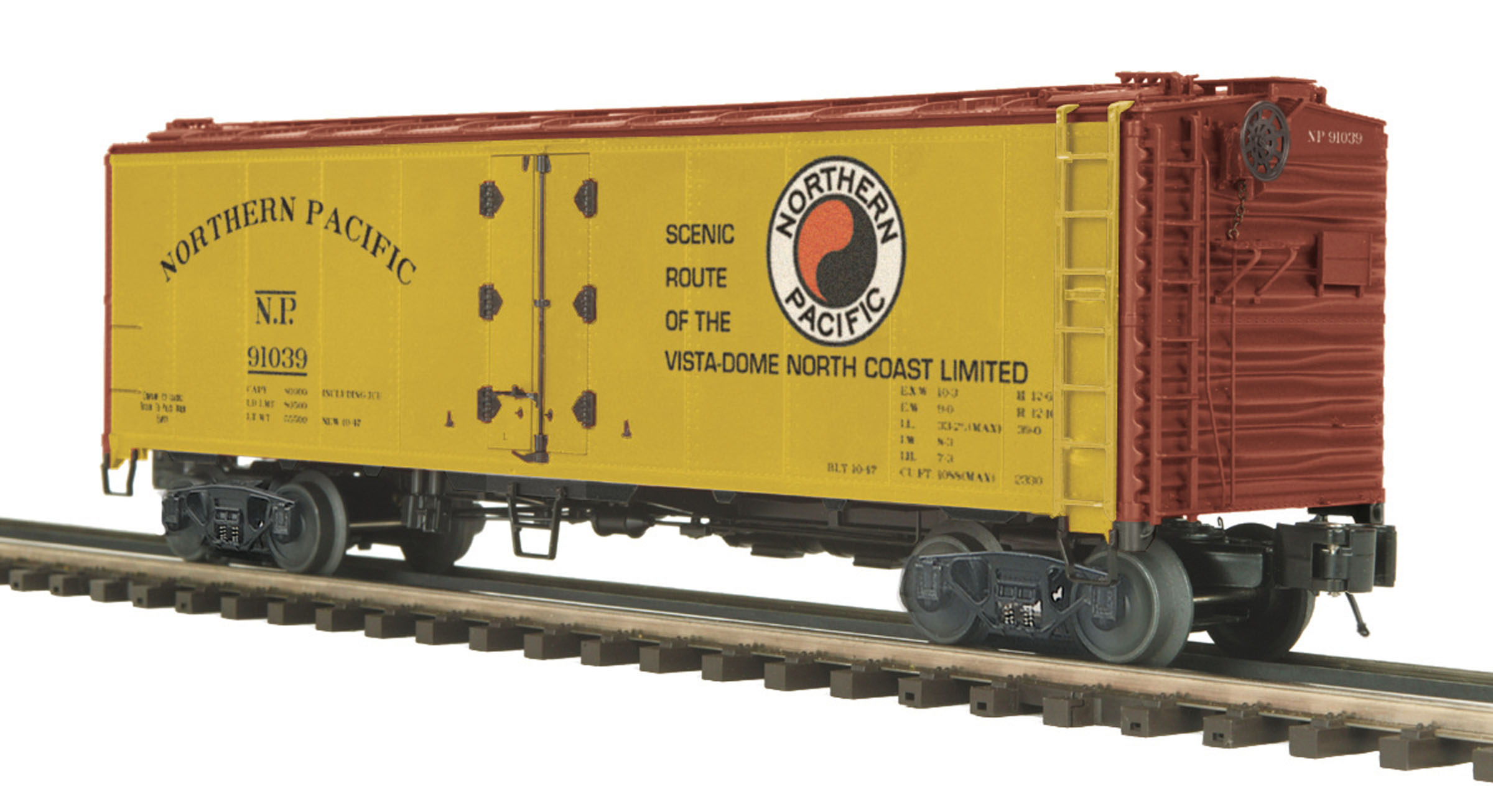
Lionel' steel side reefers also have the Murphy rectangular panel roof and 3/3 improved dreadnought ends of mid to late 1940s cars. They have come with three significant variations. Most feature standard hinged doors. They are the lightest of the 40 foot steel ice bunker reefers at 14 1/2 ounces.
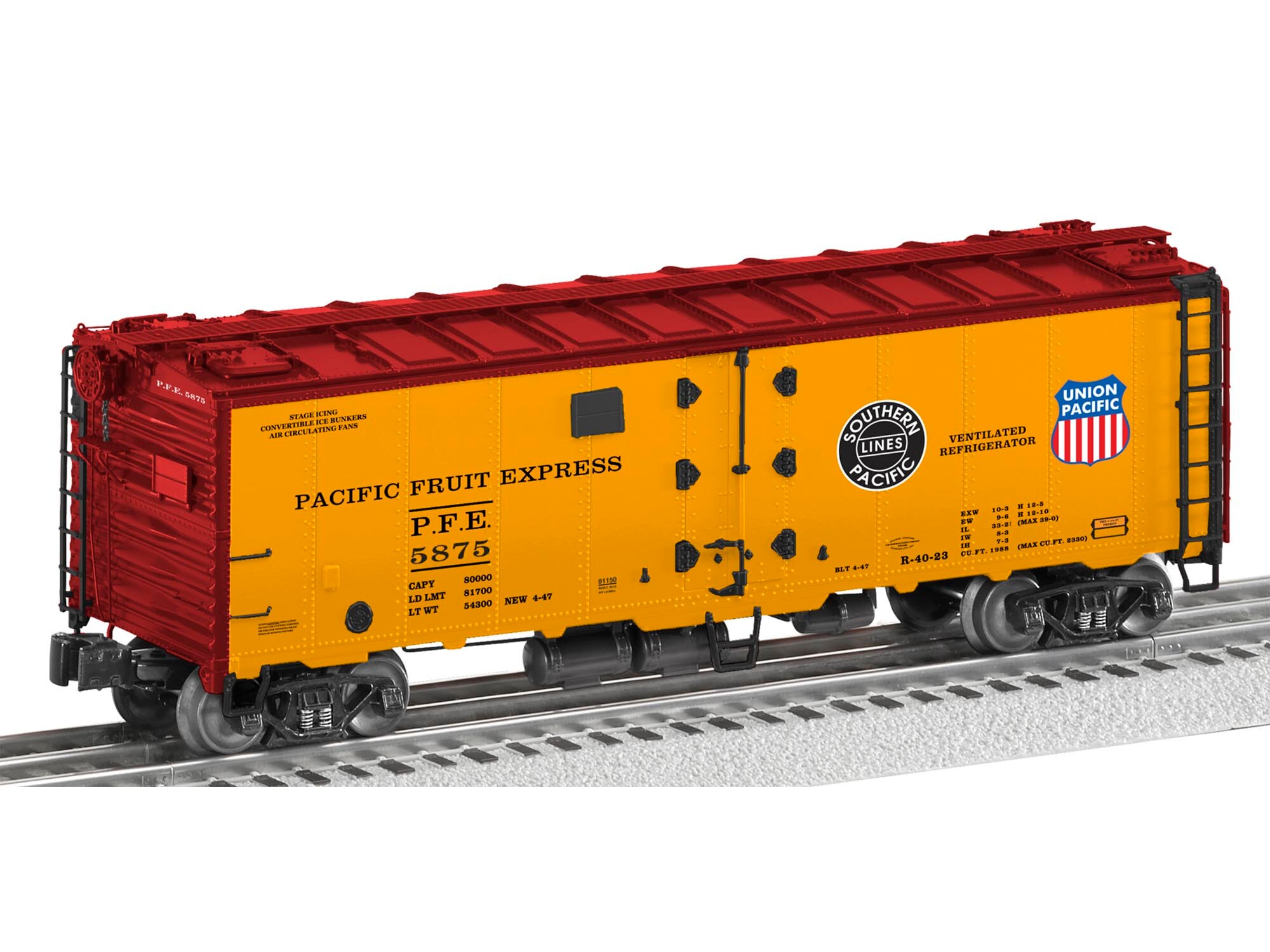
Plug Door cars are also available from Lionel.

The most rare Lionel steel sided reefers have combination doors. PFE built these cars briefly. The plug door provided a tight seal and ample width for forklift loading while the slim hinged door allowed access to check lading without letting too much cold air out.


The earliest MTH reefer depicts the last type of 40 foot ice bunker reefer commonly constructed. It features a plug door, StanRay diagonal panel roof and 3/3 improved dreadnought ends. Depicting late 1940s and 1950s construction the MTH model first appeared in the Summer 1996 catalog.
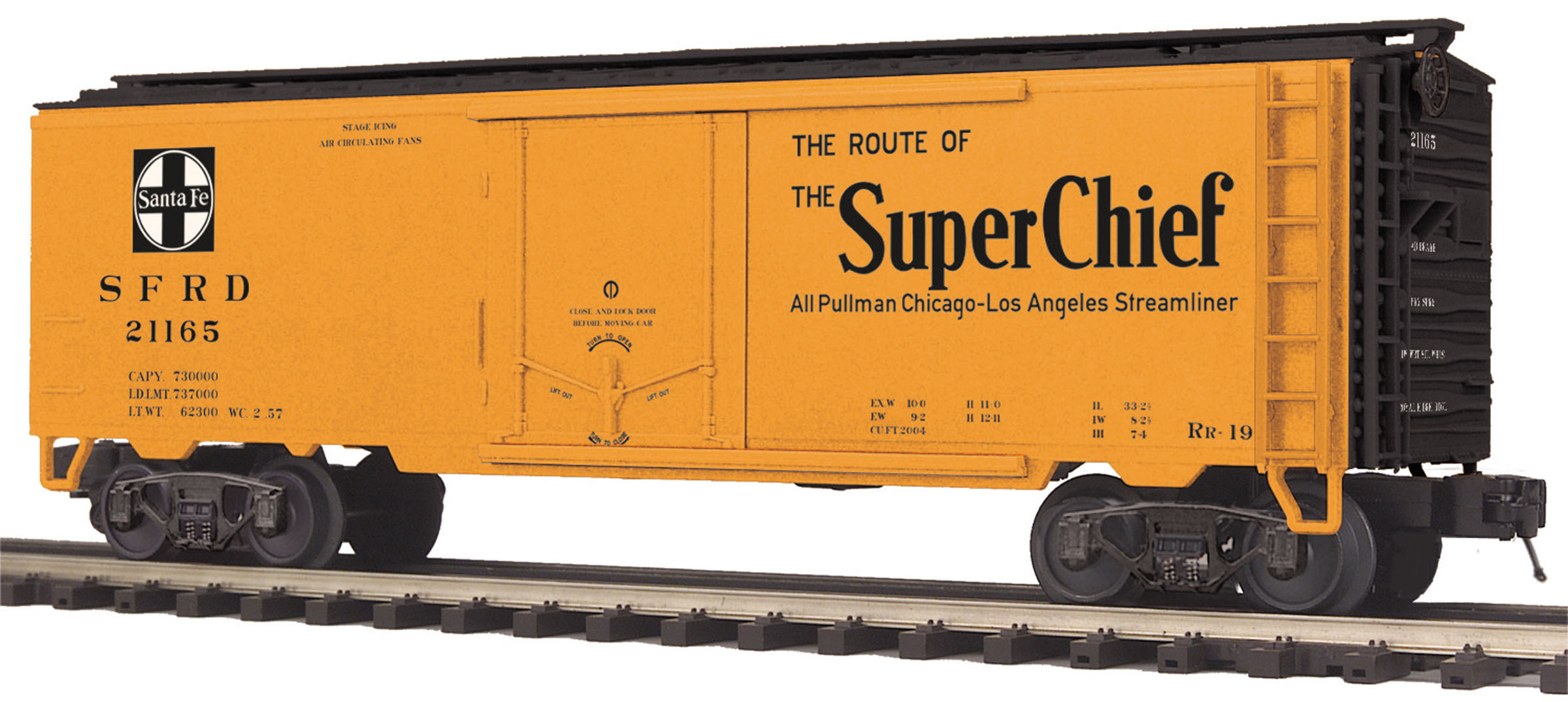
RBLs
Many shipments in ice bunker refrigerator cars were made without needing any ice at all. Shippers simply needed a car that was insulated to protect lading from extremely hot or freezing cold weather. As ice bunker reefers were withdrawn from use there was still a strong demand for insulated cars. The answer came in the form a standard box car with a tight fitting plug door and modern insulating material applied to the interior. Like many non-insulated boxcars intended for premium shipments these cars were typically equipped with devices to prevent loads from shifting and becoming damaged in transit. The combination of insulation, a clean interior and load protecting devices made these cars highly desirable to shippers of canned or bottled foods and beverages, vegetables like potatoes and onions and boxed foods like baking mixes and breakfast cereal. They were also used for non-food items that need a clean interior like pulp and paper products.
Many railroads applied special paint schemes to distinguish these premium cars. While most rail fans refer to these cars as boxcars the American Association of Railroads classified them as bunkerless refrigerator cars with load protecting devices or RBLs. We have several 40 and 50 foot plug door box car models that accurately depict bunkerless refrigerator cars.
The Atlas Trainman 40 foot RBL has R+ 3/4 ends and a StanRay diagonal panel roof. As with all Atlas O scale cars they are available in 2 or 3 rail versions. In three rail configuration they weigh 15 ounces.

Weaver's 40 foot RBL is based on a PS-1 with the distinctive Pullman ends and bow tie roof.

The Atlas 50 foot PS-1 plug door car is offered in several RBL schemes. It too features the distinctive Pullman roof and ends. Three rail versions weigh 25 ounces.

The Atlas 53 foot Evans Double plug door car is based on a popular prototype of the 1970s. The three rail versions tips the scale at 25 ounces.

The MTH double plug door car has an X panel roof and 4/4 improved Dreadnought ends. It was introduced in the MTH 1999 Volume 3 catalog. Weight is 19 ounces.
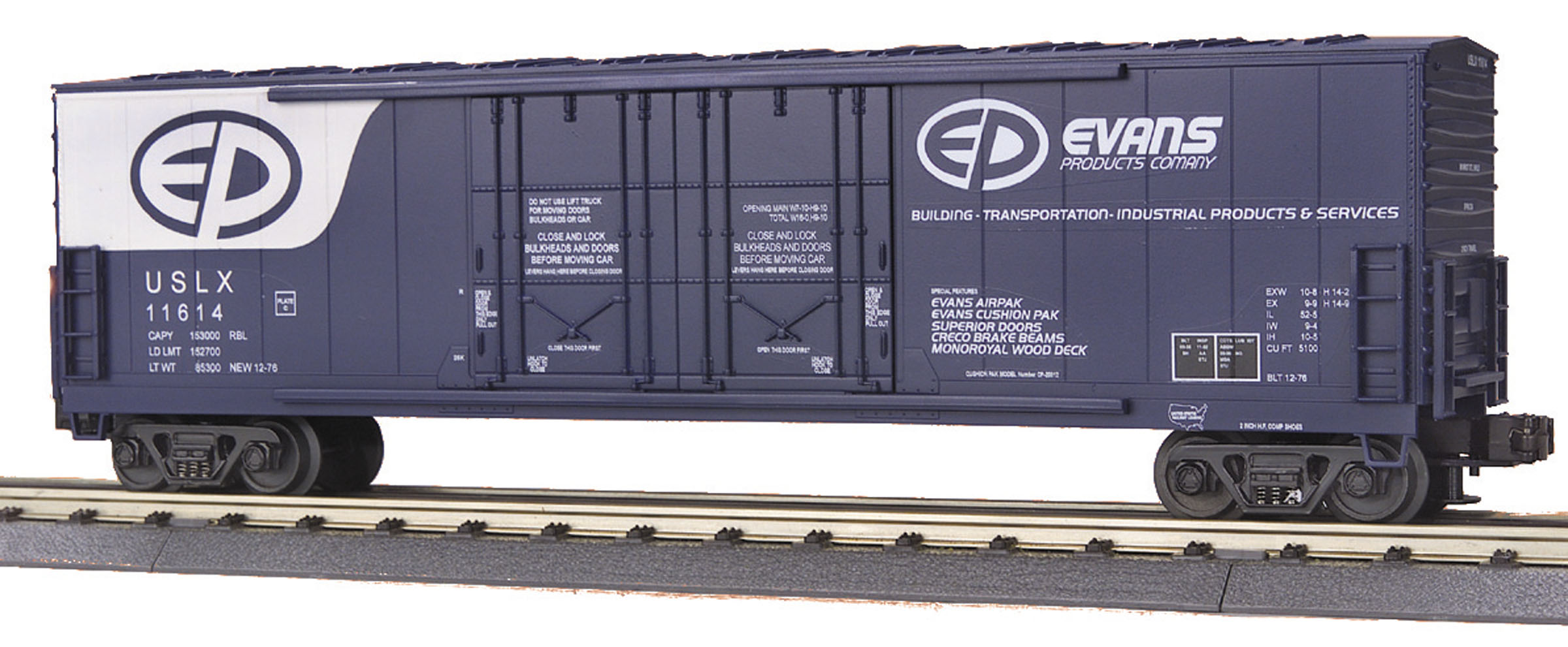
Weaver 50 foot RBLs have outside post sides, an X-panel roof and non-terminating ends.

Mechanical Reefers
Mechanical refrigerator cars entered service in large numbers in the 1950s. Their more consistent temperature control, their ability to maintain sub-freezing temperatures and to carry shipments from coast to coast without needing icing facilities quickly made them the preferred method for shipping perishable foods by rail.
We have two models of the same prototype mechanical reefer available in O scale. Pacific Car and Foundry built cars to this design from the mid 1960s into the 1970s. It features outside post sides and R+3/4 improved dreadnought ends and a 57 foot outside length.
Lionel's mechanical reefers are both nicely detailed and solidly constructed. They weigh in at a hefty 27 ounces.

Weaver has offered their PacCar reefer model in non-operating and sound equipped versions. Factory weathering is also available as an extra cost option.

For information on wood sided and express refrigerator cars look here.
https://ogrforum.ogaugerr.com/t...-and-express-reefers
As always, your comments or corrections are most welcome. And let's see photos of your wood side and express refrigerator cars.
Information on other types of O scale freight cars can be found at the link below.
https://ogrforum.ogaugerr.com/t...le-freight-car-guide













